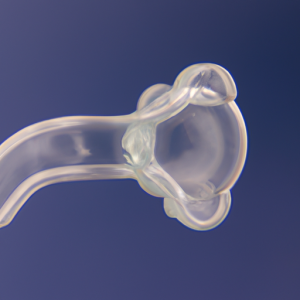Benign diseases of the mammary glands, though non-cancerous, can still cause significant discomfort and anxiety for those affected by them. Understanding the symptoms, causes, and diagnosis of these conditions is crucial in order to provide appropriate care and treatment. In this article, we will delve into the world of benign diseases of the mammary glands, exploring the common symptoms, causes, and diagnosis methods. We will also explore the various treatment options available, including non-invasive approaches and surgical interventions. Finally, we will discuss coping strategies, lifestyle changes, and the importance of supportive care for those living with these conditions. Whether you are personally affected by these diseases or seeking to broaden your knowledge on the subject, this article aims to provide valuable insights and information.
1. “Understanding Benign Diseases of the Mammary Glands: Common Symptoms, Causes, and Diagnosis”
Benign diseases of the mammary glands are non-cancerous conditions that affect the breast tissue. Although these conditions are not life-threatening, they can cause discomfort and anxiety for individuals experiencing them. Understanding the common symptoms, causes, and diagnosis methods for these diseases is crucial for early detection and appropriate treatment.
One of the most common benign diseases of the mammary glands is fibrocystic breast changes. This condition is characterized by the presence of fibrous and cystic tissue in the breasts, leading to breast pain, tenderness, and lumpiness. The exact cause of fibrocystic breast changes is not fully understood, but hormonal fluctuations throughout the menstrual cycle are believed to play a significant role.
Another benign disease is mammary duct ectasia. This condition occurs when the milk ducts beneath the nipple become blocked or widened, resulting in inflammation and the accumulation of fluid. Mammary duct ectasia commonly affects women in their 40s and 50s and may cause nipple discharge, breast pain, and nipple retraction. The exact cause is unknown, but smoking and prior breastfeeding have been identified as potential risk factors.
Fibroadenomas are another type of benign breast condition, commonly affecting women in their 20s and 30s. These are solid, round, and rubbery lumps that are easily movable within the breast tissue. While the exact cause remains unclear, hormonal imbalances and genetic factors are believed to contribute to the development of fibroadenomas.
To diagnose benign diseases of the mammary glands, a comprehensive evaluation is necessary. This typically includes a thorough medical history review, clinical breast examination, mammography, and ultrasound imaging. In some cases, a biopsy may be performed to confirm the diagnosis and rule out any possibility of malignancy.
Treatment options for benign diseases of the mammary glands depend on the specific condition and
2. “Treatment Options for Benign Mammary Gland Diseases: Exploring Non-Invasive Approaches and Surgical Interventions”
When it comes to the treatment of benign diseases of the mammary glands, medical professionals consider various options depending on the severity of the condition, the symptoms experienced, and the overall health of the patient. In many cases, non-invasive approaches are preferred as they are less invasive, carry fewer risks, and often yield successful outcomes.
One of the non-invasive treatment options for benign mammary gland diseases is medication. Medications such as pain relievers or anti-inflammatory drugs may be prescribed to alleviate discomfort and reduce inflammation in the affected area. Additionally, hormonal therapy might be recommended to regulate hormone levels and prevent further growth or development of benign abnormalities.
For certain benign conditions, lifestyle changes can also play a significant role in treatment. Weight management, regular exercise, and a healthy diet can help reduce the risk of developing benign mammary gland diseases and alleviate symptoms. These lifestyle modifications can lead to overall improved breast health and reduce the likelihood of recurrence.
Another non-invasive approach is the use of minimally invasive procedures such as aspiration or biopsy. Aspiration involves the removal of fluid or cysts from the mammary glands using a fine needle, providing relief from pain and discomfort. Biopsy, on the other hand, involves the extraction of a tissue sample from the affected area for further examination and evaluation. These procedures are generally performed under local anesthesia and have minimal recovery time.
However, in some cases, surgical intervention may be necessary to address benign mammary gland diseases. Surgery is typically recommended when the condition is causing significant discomfort, interfering with daily activities, or when there is a suspicion of malignancy. Excisional biopsy or lumpectomy may be performed to remove the affected tissue, while still preserving the overall structure and appearance of the breast. In certain instances, a mastectomy, which involves the complete removal of the breast tissue, may be necessary to ensure the
3. “Living with Benign Mammary Gland Diseases: Coping Strategies, Lifestyle Changes, and Supportive Care”
Living with benign mammary gland diseases can be challenging, but with the right coping strategies, lifestyle changes, and supportive care, individuals can effectively manage their condition and enhance their overall well-being. Here are some valuable tips to navigate through the journey of living with these benign diseases of the mammary glands.
1. Seek Knowledge and Understanding:
Education is key when it comes to managing benign mammary gland diseases. Take the time to learn about your specific condition, its symptoms, causes, and treatment options. Consult with your healthcare provider and ask questions to gain a comprehensive understanding of your diagnosis. Staying informed will empower you to make informed decisions about your health and treatment.
2. Develop a Support System:
Living with any medical condition can be emotionally challenging, and benign mammary gland diseases are no exception. It is crucial to surround yourself with a strong support system of family, friends, and healthcare professionals who can provide emotional support and guidance. Consider joining support groups or online communities where you can connect with others who share similar experiences. Sharing your thoughts, concerns, and triumphs with others who understand can alleviate feelings of isolation and provide valuable insights and advice.
3. Practice Self-Care:
Managing benign mammary gland diseases involves taking care of your physical and emotional well-being. Prioritize self-care activities that help reduce stress levels, such as practicing mindfulness, deep breathing exercises, or engaging in activities you enjoy. Adequate sleep, regular exercise, and a balanced diet also play a significant role in maintaining overall health. Remember to listen to your body’s needs and give yourself permission to rest when necessary.
4. Make Lifestyle Changes:
Certain lifestyle changes can positively impact your condition and reduce the risk of complications. It is advisable to maintain a healthy weight, as excess weight can contribute to hormonal imbalances and exacerbate symptoms. Limiting alcohol consumption and avoiding tobacco products are

